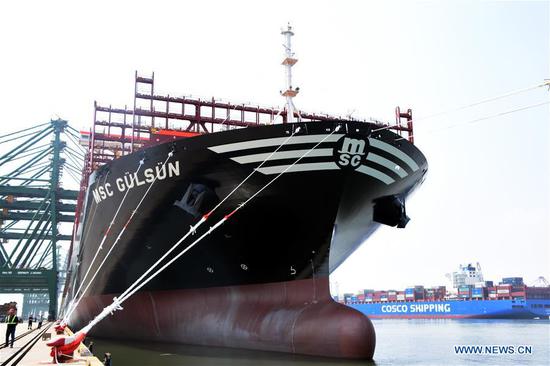The number of train stations on the Chinese mainland with direct connections to Hong Kong has grown to 58 thanks to a new railway operating plan put into effect on Wednesday, the national railway operator said.
China State Railway Group said the plan, designed to optimize the country's passenger and cargo transport services, linked 13 more high-speed train stations to Hong Kong, including stations in Hebei, Hunan and Guizhou provinces and the Guangxi Zhuang autonomous region.
They include a direct, high-speed train service from Tianjin West station to West Kowloon station in Hong Kong, with a stopover at Baiyangdian station in the Xiongan New Area.
That means people in Xiongan will be able to take a high-speed train straight to Hong Kong, rather than having to travel to Beijing or Tianjin first.
The Xiongan New Area, covering Xiongxian, Rongcheng and Anxin counties in Hebei province, is about 100 kilometers south of Beijing. A new area of "national significance" much like the Shenzhen Special Economic Zone and Shanghai Pudong New Area, it is expected to take over some noncapital functions from Beijing and become a digital smart city driven by innovation.
Lyu Huajun, a resident of Nanning, Guangxi's capital, decided to book flights for a family holiday in Italy from Hong Kong rather than Guangzhou, the capital of Guangdong province, after learning that Nanning East station was starting direct high-speed train service to Hong Kong.
"We wanted to stay in Hong Kong for two days and take our kids to Disneyland and the wax museum," he said on Wednesday. "We took the train in the morning and arrived at Hong Kong at 3 o'clock in the afternoon after a four-hour trip."
The plan also will shorten the travel time on high-speed trips between some cities, with, for example, trains traveling from Kunming, capital of Yunnan province, to Guangzhou in just seven hours-an hour and 42 minutes faster than before.
Some 260,000 passenger seats will be added each day to cope with summer's peak season.
The country's railway freight capacity has also been enhanced, with two additional domestic lines added to the China-Europe freight train service, taking the total to 70.


















































